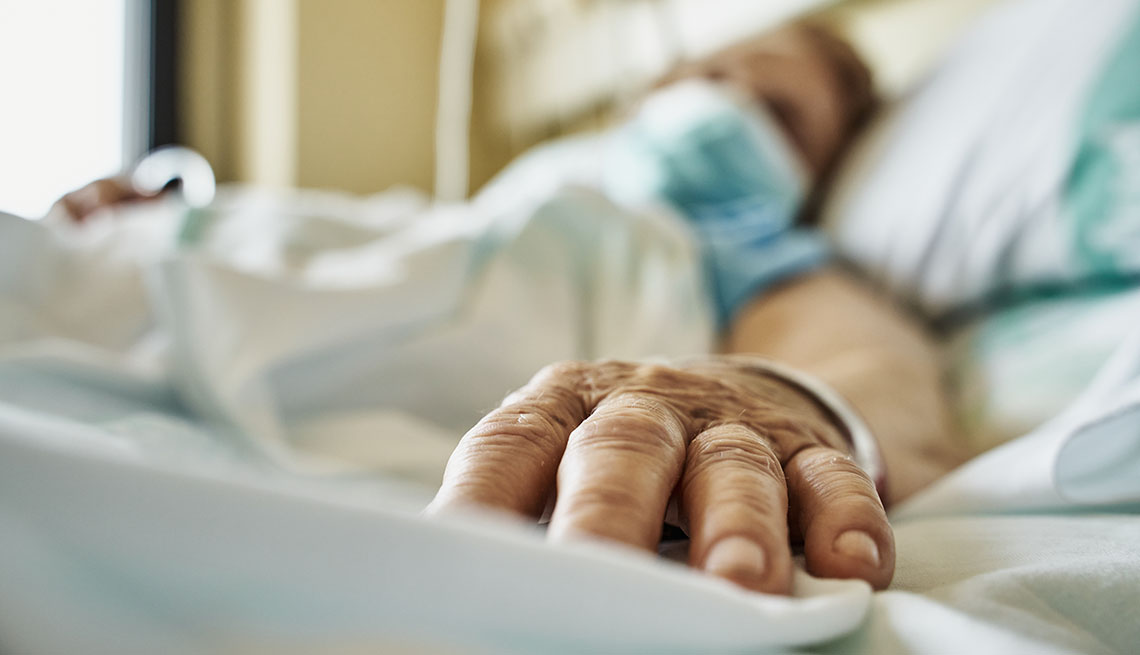
Omicron variant still poses high risk to older people
- Select a language for the TTS:
- UK English Female
- UK English Male
- US English Female
- US English Male
- Australian Female
- Australian Male
- Language selected: (auto detect) - EN
Play all audios:

NOT ALL DOOM AND GLOOM Even with the high rates of illness and death throughout the country, experts say we’re at a much different place in the pandemic compared to previous surges. For
starters, the vaccine formulas developed in 2020 continue to hold their ground against new variants like omicron, most notably after a booster dose. MEDICAL CONDITIONS THAT INCREASE RISK FOR
SEVERE COVID-19 * Cancer * Chronic kidney disease * Chronic liver disease * Chronic lung diseases * Dementia and other neurological conditions * Diabetes * Heart conditions * Weakened
immune system * Overweight and obesity This list is not exhaustive but includes many of the chronic conditions that affect older adults. _Source: CDC_ Recent research out of the United
Kingdom shows that protection against death with omicron is about 95 percent in adults 50 and older who are boosted. Similarly, a study led by CDC researchers found that boosters were about
90 percent effective at preventing COVID-19–associated hospitalizations during the early days of the omicron era. “It’s very clear, particularly with omicron, that the third shot adds a
huge amount of additional protection,” Wachter says — especially for older adults. “If you've had three shots, you have brought your risk down to that of a relatively young, healthy
person.” So far about 65 percent of eligible adults aged 65 and older have received their booster dose; for adults 50 and older, that number drops to about 56 percent, federal tallies show.
Advances in treatments for COVID-19 have also changed the game for those at increased risk for severe illness. In addition to remdesivir and monoclonal antibodies, which are typically
administered to infected patients in a health care setting, two new prescription pills from Pfizer and Merck were recently authorized for at-home use. These antiviral medications were shown
in clinical trials to significantly reduce the likelihood that high-risk adults infected with the coronavirus end up in the hospital. The pills are currently in short supply, but federal
officials have announced plans to make them — and testing, since a quick diagnosis is key — more accessible. “I feel like that will be a big turning point,” Ciaranello says. BALANCING
CAUTION WITH CONNECTEDNESS IS KEY FOR OLDER ADULTS As the omicron wave crests and infections fall, Wachter predicts that one of the biggest challenges for older adults — particularly those
who have been in “hunker-down mode for two years” — will be trying to decide when it’s safe to resume a more normal state of life. “We’re not there yet, because the case rates are still
quite high,” he says. But he’s hopeful that in several more weeks, people who are vaccinated and boosted can feel better about visiting with family and traveling for pleasure, depending on
their individual risks and comfort levels. In the meantime, don’t get complacent, Lachs says. Make sure you’re up to date on your vaccines, upgrade your mask to a well-fitted respirator
like an N95, and if you have access to at-home tests (you can order four free kits per household here), swab your nose before socializing with others. Also, if you are immunocompromised,
talk to your doctor about a monoclonal antibody therapy that may help prevent a coronavirus infection. “If I were in a high-risk group, I would button up for the next two to three weeks.
Let this blow through, and then hopefully by mid-February or March, this will be past us and you can kind of start returning to normal life,” Wortmann says. It’s also important to balance
vigilance with your mental and emotional health; staying connected with others until omicron abates can help. “Loneliness and isolation is a real risk,” Lachs says — one that can also
worsen the health of older adults, according to the CDC. Lachs suggests meeting outside with others when the weather allows or coordinating online dinner parties with friends if in-person
gatherings aren’t an option. There are also online exercise classes that can help you stay active. (AARP has a step-by-step guide on how to set up a Zoom account and use it to stay in touch
with family and friends, as well as resources to help ease social isolation during the winter season.) “[The pandemic] has been trying, socially and medically,” Lachs says. "However,
it has also demonstrated the incredible resilience of many older adults and their strengths and their creativity.” _Rachel Nania writes about health care and health policy for AARP.
Previously she was a reporter and editor for WTOP Radio in Washington, D.C. A recipient of a Gracie Award and a regional Edward R. Murrow Award, she also participated in a dementia
fellowship with the National Press Foundation._
